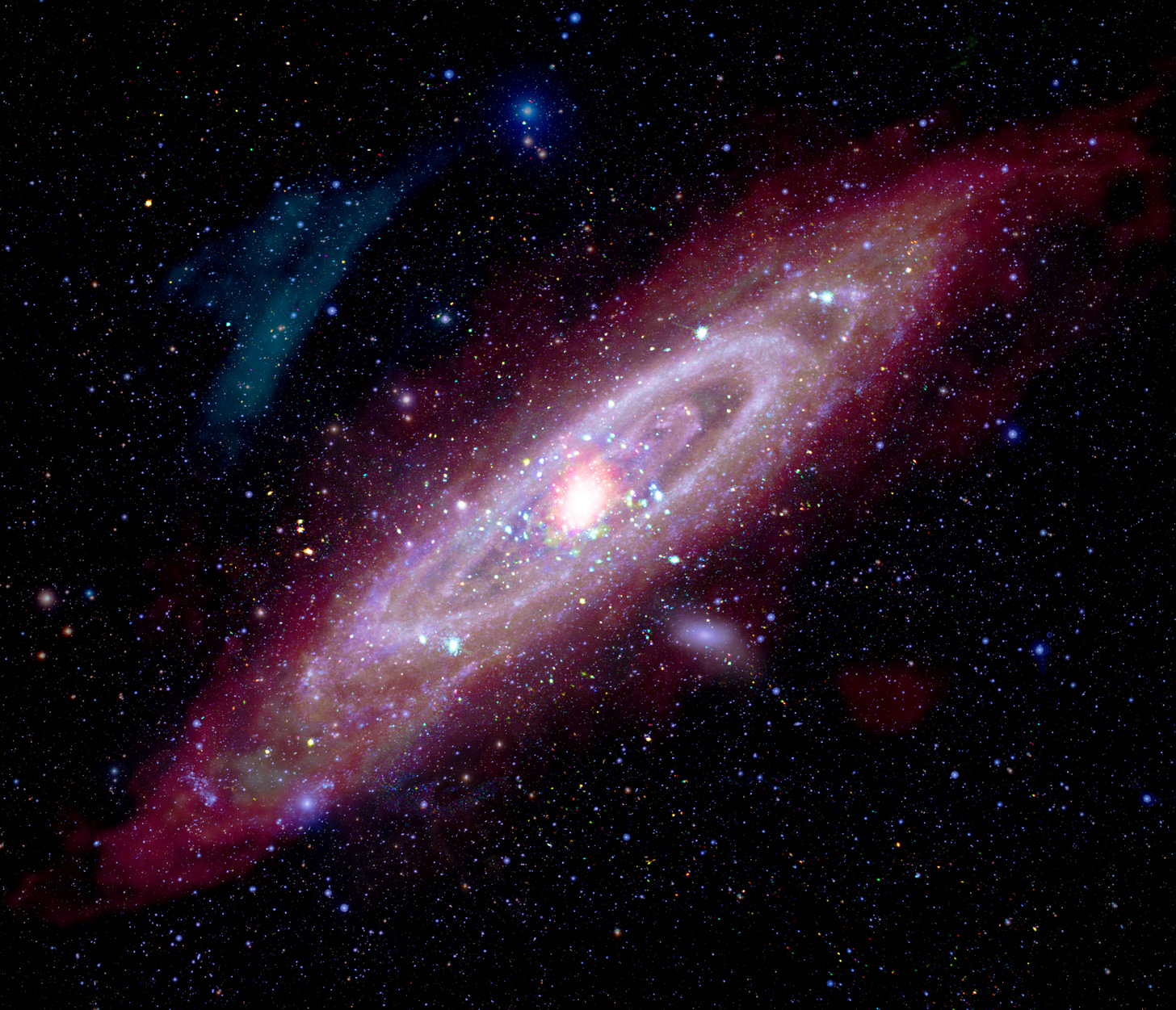Seeing the Forest
July 5-11
I spent some time in the woods today, and it occurred to me how nothing can be understood from a single perspective. I could study nearby trees and discern all the tiny details of a living forest that can only be seen from inside it, but I had no concept of the overall shape, size, or structure of the forest as a whole.
It’s difficult for us to understand the structure of our own Milky Way galaxy for the same reason: We’re embedded in it. We can see nearby stars, just as I could see nearby trees, but we lack the perspective to view our galaxy as a whole.
That’s set to change. An international collaboration has brought together some of the most powerful telescopes ever built to give us multiple views of a galaxy much like our own, helping us gain new perspectives on the Milky Way.
One of the latest outputs of this collaboration: a recently released image of Andromeda that shows our nearest neighbor galaxy as we’ve never seen it before.
Andromeda is also known as Messier 31, or M31. First published in 1774, Charles Messier’s Catalog of Nebulae and Star Clusters lists 110 deep-sky objects, known collectively as Messier objects. Observing all of these objects, some of the brightest in the night sky, is a rite of passage for amateur astronomers.
When seen from a dark sky site, Andromeda appears larger than the full Moon. From my semi-rural Kentucky home, M31 is easily visible as a small cloud.
Yet, that “small cloud,” located 2.5 million light years away, contains about a trillion stars — making it significantly bigger than our Milky Way, which contains around 400 million stars.
Despite the size difference, M31 is structurally very similar to our galaxy: Both the Milky Way and Andromeda are barred spiral galaxies — a type of galaxy that is likely the image you think of when you visualize any galaxy.
Data collected from 10 different orbiting satellites display Andromeda in multiple wavelengths of light in a single composite image. Each color in the image represents a different wavelength of light: optical, infrared, ultraviolet, radio, and X-ray. The composite image reveals many scales and energy levels simultaneously, allowing us to see dynamic change alongside long-term processes and structures.
These data will be used to study Andromeda of course, but they also will be employed to further refine our models of the Milky Way. Superior models will allow us to better understand the large-scale structure of our galaxy, revealing to us the forest in full.
The Weekly Roundup.
The Morning Sky
Blazing, bright, and beautiful Venus guides you toward the rising Sun each morning. Look to the east before dawn to spot the most brilliant of planets. Venus will move close to the Hyades cluster in Taurus starting on Thursday. A pair of binoculars should show both Venus and the Hyades in a single field of view. Saturn is high in the southeastern morning sky, looking a dull yellow.
The Evening Sky
Mercury and the Beehive cluster will remain visible in the same binocular field — look low in the west after sunset through Wednesday. Mars is about halfway up the western sky as darkness falls, glittering like a ruby in the constellation Leo. The Moon is full on Thursday night.
Dan Price is a NASA/JPL Solar System Ambassador and informal educator. Have a question about astronomy or space science? Send an email to dan@starpointestudio.com and it might be featured in a future column.


